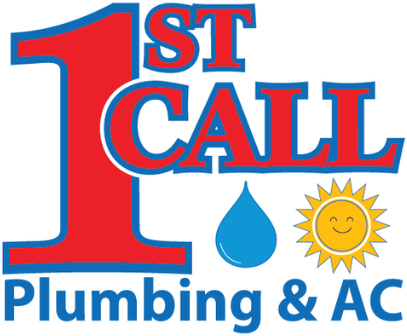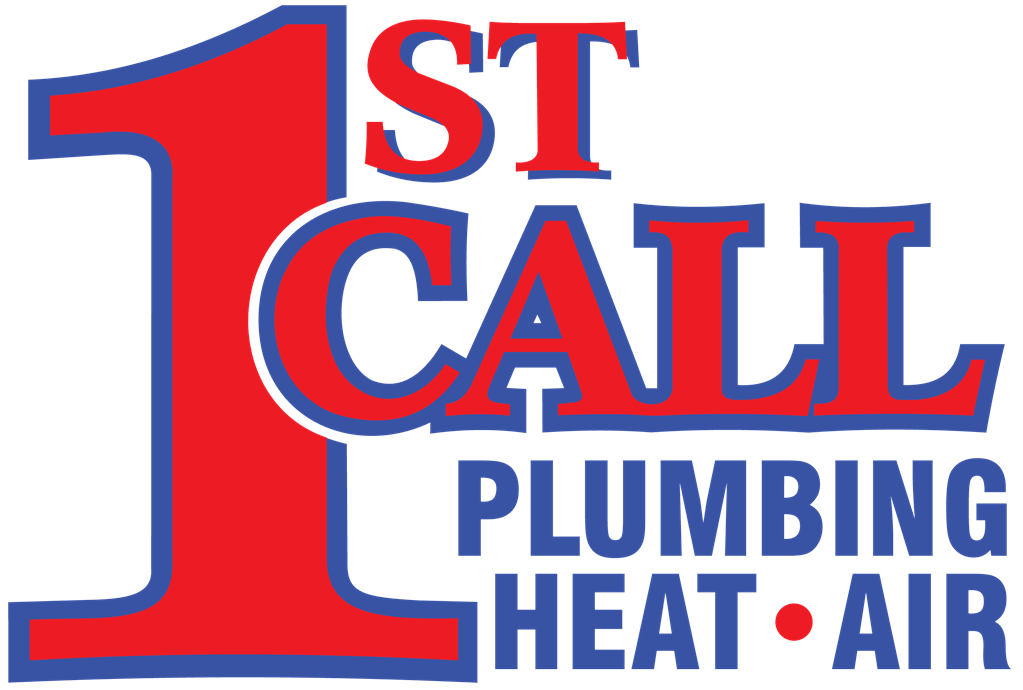The HVAC industry is undergoing a significant change that directly impacts homeowners: the transition to new, environmentally friendly refrigerants. As of January 1st, 2025, the U.S. Environmental Protection Agency (EPA) has mandated the phase-out of certain refrigerants, including R-410A, in favor of next-generation alternatives such as R-454B. These changes are designed to reduce greenhouse gas emissions, improve energy efficiency, and promote sustainability.
But what does this mean for homeowners? Whether you need AC maintenance, HVAC maintenance, or are planning to install AC, install ducts & vents, or even install a heating system, understanding these refrigerant updates is crucial. If your current system requires HVAC repairs, you may also be affected by this transition.
This guide will explain everything homeowners need to know about the refrigerant changes, how they impact existing and new HVAC systems, and what steps you should take to prepare for the transition.
Table of Contents
- Introduction
- What Changed on January 1st, 2025?
- The Old vs. New Refrigerants
- Benefits of Upgrading to an R-454B System
- What Homeowners Need to Consider
- System Compatibility
- Availability and Cost of R-410A
- Long-Term Planning
- Choosing the Right Contractor
- Why the Change?
- Environmental Protection
- Energy Efficiency
- Compliance with Regulations
- How Will This Impact Homeowners?
- For New AC / HVAC Installations
- For Existing AC / HVAC Systems
- Should You Upgrade Your AC / HVAC System Now?
- Factors to Consider
- Different Scenarios for Homeowners
- Decision Checklist
- How to Prepare for the Transition
- Routine Maintenance
- Ductwork Optimization
- Consulting a Professional
- Cost Considerations
- Expected Costs and Savings
- Financing Options
- Common Homeowner Questions
- Conclusion

What Changed on January 1st, 2025?
The transition away from high-global-warming-potential (GWP) refrigerants is part of the U.S. commitment to reducing carbon emissions and fighting climate change. The EPA’s regulations align with the American Innovation and Manufacturing (AIM) Act, which aims to gradually phase out hydrofluorocarbons (HFCs) in favor of low-GWP alternatives.
The Old vs. New Refrigerants
- Being Phased Out: R-410A, a widely used refrigerant in residential air conditioning systems, has a high GWP and is being discontinued in new AC systems and units.
- The Replacement: R-454B, also known as Puron Advance, is the leading alternative, boasting a lower GWP while maintaining efficiency and performance.
This means that if you are looking to install an AC unit, your choices will be affected by these new refrigerant regulations. HVAC manufacturers have already begun shifting production to accommodate these changes, and many new models will only be compatible with R-454B.
Benefits of Upgrading to an R-454B System
If you are considering an HVAC unit upgrade, here are the key benefits of switching to an R-454B system:
- Eco-Friendly Performance: R-454B has a lower GWP than R-410A, significantly reducing environmental impact.
- Enhanced Cooling Efficiency: Newer refrigerants perform better in extreme temperatures, improving overall system efficiency.
- Longer Equipment Lifespan: R-454B-compatible HVAC systems are designed for better durability, requiring fewer repairs and extending their lifespan.
- Quieter Operation: Many next-generation HVAC models operate more quietly, making them ideal for residential use.
- Smart Home Integration: Many R-454B systems come with advanced smart thermostats and automation features, enhancing home comfort and convenience.
What Homeowners Need to Consider
- System Compatibility: R-454B systems are not backward compatible with R-410A units. If your current air conditioning unit fails, you may need to replace the entire system rather than just the refrigerant.
- Phased Availability of R-410A: While R-410A will still be available for servicing existing units, its production will decline, making it more expensive over time.
- Long-Term Planning: Homeowners with aging HVAC systems should consider budgeting for a replacement in the next few years to avoid high repair costs associated with older refrigerants.
- Resale Value: Homes with outdated HVAC systems using phased-out refrigerants may face lower resale value or require upgrades before selling.
- Choosing the Right Contractor: Working with an experienced HVAC contractor who understands the new refrigerant requirements ensures proper installation and compliance with industry regulations.

Why the Change?
There are several key reasons why the HVAC industry is shifting toward new refrigerants:
Environmental Protection
R-454B significantly reduces the carbon footprint of HVAC systems by lowering the greenhouse gas emissions associated with cooling and heating. The U.S. government has committed to cutting HFC emissions by 85% over the next 15 years, and this refrigerant transition is a crucial step in that effort.
Industry Insight: The HVAC industry has been gradually shifting toward greener solutions due to growing concerns about climate change. Consumers are also becoming more environmentally conscious, which has influenced manufacturers to develop energy-efficient and eco-friendly systems. Homeowners looking to make a sustainable choice should consider this transition an opportunity to invest in an environmentally responsible HVAC system.
Energy Efficiency
New refrigerants help HVAC systems operate more efficiently, leading to lower energy bills for homeowners. High-efficiency AC units using R-454B are expected to deliver better cooling performance with less electricity usage, reducing both energy costs and environmental impact.
Homeowner Tip: If you’re planning an AC/HVAC upgrade, look for ENERGY STAR®-certified systems that use R-454B. These models are designed to maximize energy efficiency, leading to significant savings over time.
Compliance with Regulations
The AIM Act and EPA policies require manufacturers, installers, and homeowners to adopt refrigerants that align with new environmental standards. Non-compliance can lead to fines for HVAC companies and service providers, making it essential for industry professionals to stay up to date with these changes.
Industry Insight: Regulations are becoming stricter not only in the U.S. but worldwide. Many countries are adopting similar measures to phase out high-GWP refrigerants, meaning that this transition is part of a global movement toward sustainable cooling solutions.

How Will This Impact Homeowners?
The refrigerant transition will have different effects depending on whether you are installing a new HVAC system or maintaining an existing one.
For New AC / HVAC Installations
If you need to install AC or install a heating system, your new equipment will use R-454B or another low-GWP refrigerant. Here’s what you need to consider:
- New Refrigerant, New Equipment: AC units designed for R-454B are not compatible with R-410A systems, meaning homeowners must purchase refrigerant-compatible units.
- Ductwork Considerations: When installing a new system, you may need to install HVAC ducts & vents that optimize airflow for efficient heating and cooling.
- Cost Implications: Newer systems may have slightly higher upfront costs, but they are expected to deliver energy savings over time, making them a cost-effective long-term investment.
- Installation Challenges: Since R-454B operates at different pressures than R-410A, technicians must be trained to handle the new refrigerant safely and effectively.
- Warranty and Support: Many HVAC manufacturers are offering extended warranties on new R-454B systems, ensuring peace of mind for homeowners transitioning to the updated technology.
For Existing AC / HVAC Systems
Homeowners with older air conditioner units should prepare for potential challenges:
- Refrigerant Availability: While R-410A will still be available for repairs, its production will decline, leading to increased prices.
- Maintenance Considerations: Regular AC maintenance and HVAC maintenance will be more critical than ever to prolong system lifespan and ensure optimal performance.
- Repair Costs: If your system requires repair to your AC, heating system, or thermostat, the cost of servicing may rise due to refrigerant shortages.
- Retrofit Options: Some homeowners may be able to retrofit their current systems to use an alternative refrigerant, but this requires professional assessment and may not be cost-effective.
- Long-Term Planning: If your HVAC system is over 10 years old, now may be the best time to start budgeting for a new system that meets updated refrigerant standards, rather than facing emergency replacement costs in the future.
Should You Upgrade Your AC / HVAC System Now?
Upgrading to an R-454B system can offer long-term benefits, but homeowners should assess their current HVAC setup before making a decision.
Factors to Consider Before Upgrading
- Age of Your System: If your unit is over 10 years old, replacing it with an R-454B-compatible system may be the best option.
- Energy Efficiency: Upgrading can lower energy bills and improve home comfort.
- Cost of Repairs vs. Replacement: If you frequently need to repair ducts & vents, repair AC systems, or repair HVAC units, replacing the system might be more cost-effective.
- Refrigerant Costs: As R-410A becomes more expensive, ongoing maintenance costs could increase.
- Local Incentives: Some states and utility companies offer rebates or incentives for upgrading to energy-efficient HVAC systems, making it financially beneficial to replace an older unit sooner rather than later.
Different Scenarios for Homeowners:
- If You Have a Newer HVAC System (Less Than 5 Years Old): Continue regular maintenance and monitor refrigerant availability.
- If Your System Is Aging (6-10 Years Old): Consider an upgrade in the next few years to avoid rising costs.
- If Your System Is Over 10 Years Old: Now is the best time to upgrade before costs rise and incentives disappear.
Decision Checklist for Homeowners
✅ Your energy bills have been rising.
✅ You’ve had multiple repairs in the past year.
✅ You’re planning to stay in your home for 5+ years.
✅ You want to take advantage of rebates and incentives.
If you checked three or more boxes, now is the perfect time to upgrade!

How to Prepare for the Transition
Homeowners should take proactive steps to ensure their HVAC systems remain efficient and compliant with new regulations.
- Schedule Routine Maintenance: Regular AC maintenance, HVAC maintenance, and heating maintenance can extend the life of your current system.
- Optimize Your Ductwork: If you plan to install ducts & vents or repair ducts & vents, ensure your system is properly sealed and efficient.
- Consult a Professional: Work with an HVAC expert, like 1st Call Plumbing & AC, to assess whether you should upgrade or maintain your system.
- Stay Informed: Keep up with industry changes and consult reliable sources to make informed decisions about your HVAC system.
Cost Considerations
- Expected Costs: The upfront cost of upgrading to an R-454B-compatible system varies, but prices are expected to rise as demand increases. Planning ahead can help homeowners budget effectively.
- Long-Term Savings: Investing in an energy-efficient system now can lead to lower utility bills and maintenance costs over time.
- Financing Options: Some HVAC companies, including 1st Call Plumbing & AC, offer financing plans to help homeowners transition to new systems affordably.

Common Homeowner Questions
- Can I still buy an R-410A system after January 1st?
New systems will use R-454B, but R-410A units already installed can still be serviced. - Will HVAC technicians still be able to repair my current system?
Yes, but R-410A will become more expensive and harder to find over time. - Does R-454B require special handling?
Yes, but trained technicians like those at 1st Call Plumbing & AC are fully equipped to service new systems safely. - Will an R-454B system work better in hot climates?
Yes! These systems are designed for improved efficiency in extreme heat, making them ideal for warmer regions. - Are there government rebates available?
Many states offer tax credits and rebates for upgrading to energy-efficient HVAC systems. Be sure to check local incentives to maximize savings.
How will this impact my energy bills?
With increased efficiency, R-454B systems typically lower monthly energy costs, helping homeowners save in the long run.
How much does an Air Conditioning System cost in the San Antonio, Boerne, New Braunfels or Seguin areas?
On average a new AC system or HVAC unit in the San Antonio, Boerne, New Braunfels or Seguin areas installed by a professional licensed, bonded and insured AC technician will range between $3,500 to $30,000+. The price depends on many factors, including the size of your home, specific brand of the air conditioning unit chosen, its efficiency, extra elements necessary for installation and the installation requirements.
Please call 1st Call Plumbing & AC to schedule a Free quote or a Free second opinion.
What Homeowners Can Expect from American Standard’s
Next-Generation Systems
As a leader in HVAC technology, American Standard has already introduced next-generation refrigerant systems designed for energy efficiency and superior performance. Their commitment to sustainability means homeowners investing in new HVAC equipment can trust that they are receiving quality, state-of-the-art solutions that comply with upcoming regulations.
Why Choose American Standard?
- Advanced Technology: Their systems are built to optimize energy use and maintain peak performance with R-454B.
- Reliability: Long-lasting, durable units that require minimal repairs.
- Energy Savings: High-efficiency models that reduce utility bills over time.
- Sustainability: Their commitment to eco-friendly technology helps reduce environmental impact.
- Innovative Features: Smart thermostats and zoning capabilities enhance comfort and control over indoor climate.
- Industry Leadership: A trusted brand with a history of producing high-quality, dependable HVAC solutions.
Long-Term Planning
If your air conditioning system is over 10 years old, now may be the best time to start budgeting for a new system that meets updated refrigerant standards, rather than facing emergency replacement costs in the future.
Conclusion
The new refrigerant regulations mark a significant shift for homeowners and the HVAC industry. Understanding these changes can help you make informed decisions about whether to maintain, repair, or replace your current system. With 1st Call Plumbing & AC, you have a trusted partner to navigate this transition and ensure your home remains comfortable and energy-efficient.
Beat the rush—schedule your HVAC assessment with 1st Call Plumbing & AC today! Our expert team will help you navigate the refrigerant changes and find the best solution for your home. Call us now or book an appointment online!




